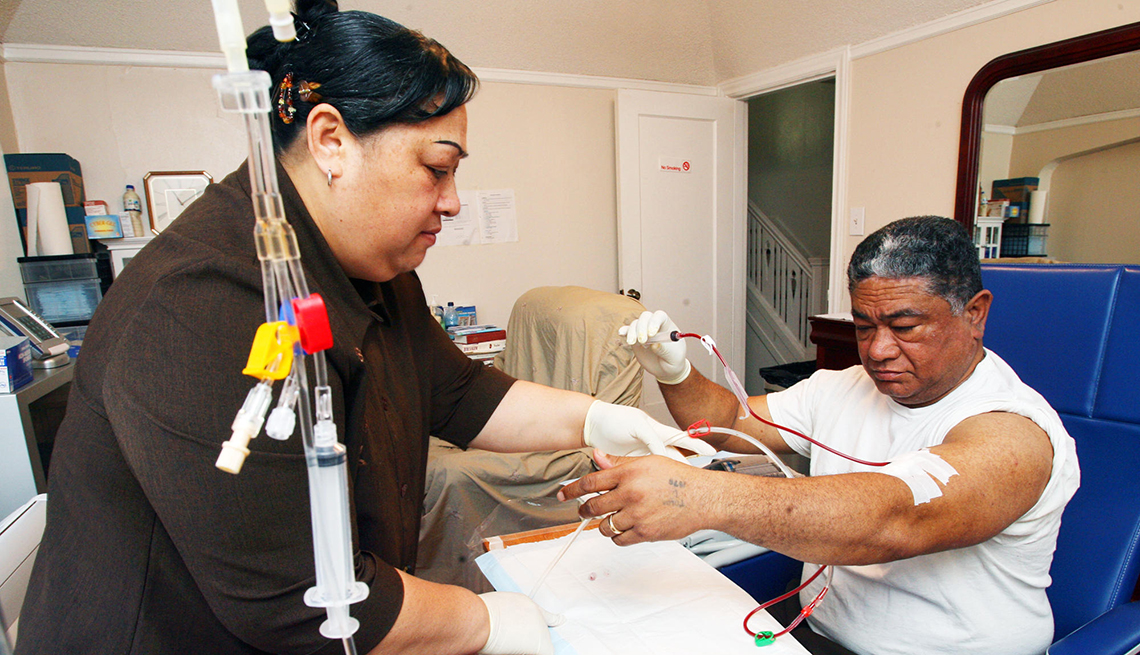
- Select a language for the TTS:
- UK English Female
- UK English Male
- US English Female
- US English Male
- Australian Female
- Australian Male
- Language selected: (auto detect) - EN
Play all audios:
With this treatment, a fluid called dialysate (water, electrolytes and salts) is flushed into a patient's abdomen through a surgically implanted catheter. There, it absorbs waste
products and excess fluids over several hours before being drained away. About 10 percent of patients on dialysis choose peritoneal therapy, including 18,500 older adults, according to
federal data. Reynolds does this while he sleeps — a popular option. His routine: After dinner, he sets out two bags of dialysate, ointments, sterile solutions, gauze bandages and a fresh
cassette for his dialysis machine with four tubes attached. It takes him 23 minutes to gather everything, clean the area around his catheter and sterilize equipment, and about the same to
take things down in the morning. Just before going to sleep, Reynolds hooks up to his dialysis machine, which runs for 7 1/2 hours. "I live a normal, productive life,” Reynolds said,
“and I'm determined to make this work." TRAINING IS DEMANDING In December 2003, when Letisha Wadsworth started home hemodialysis in Brooklyn, New York, she was working at a social
service agency and wanted to keep her job. Doing dialysis in the evening made that possible. This therapy requires one to two months of education and training for the patient and usually a
care partner. With each treatment, two needles are most often stuck in a vein in a patient's arm. Blood is pumped out of the patient and through a machine, where it's cleansed and
waste products are removed, before being pumped back into the body. The training was “rigorous” and “pretty scary for both of us,” says Wadsworth, now 70, whose husband, Damon, accompanied
her. “We learned a lot, but we still didn't know about issues that could arise." For instance, Wadsworth had to learn what to do if air got into one of the lines and when to adjust
the rate at which her blood was pumped and flowed through the machine. Another issue: finding space for 30 large boxes of supplies (fluids, filters, needles, syringes and more) that arrive
each month. Damon, 73, helps her set up. The routine: Dialysis starts around 8 p.m. and goes for five hours, four days a week. She passes the time eating dinner, watching TV, talking on the
phone or playing Scrabble with her husband.








